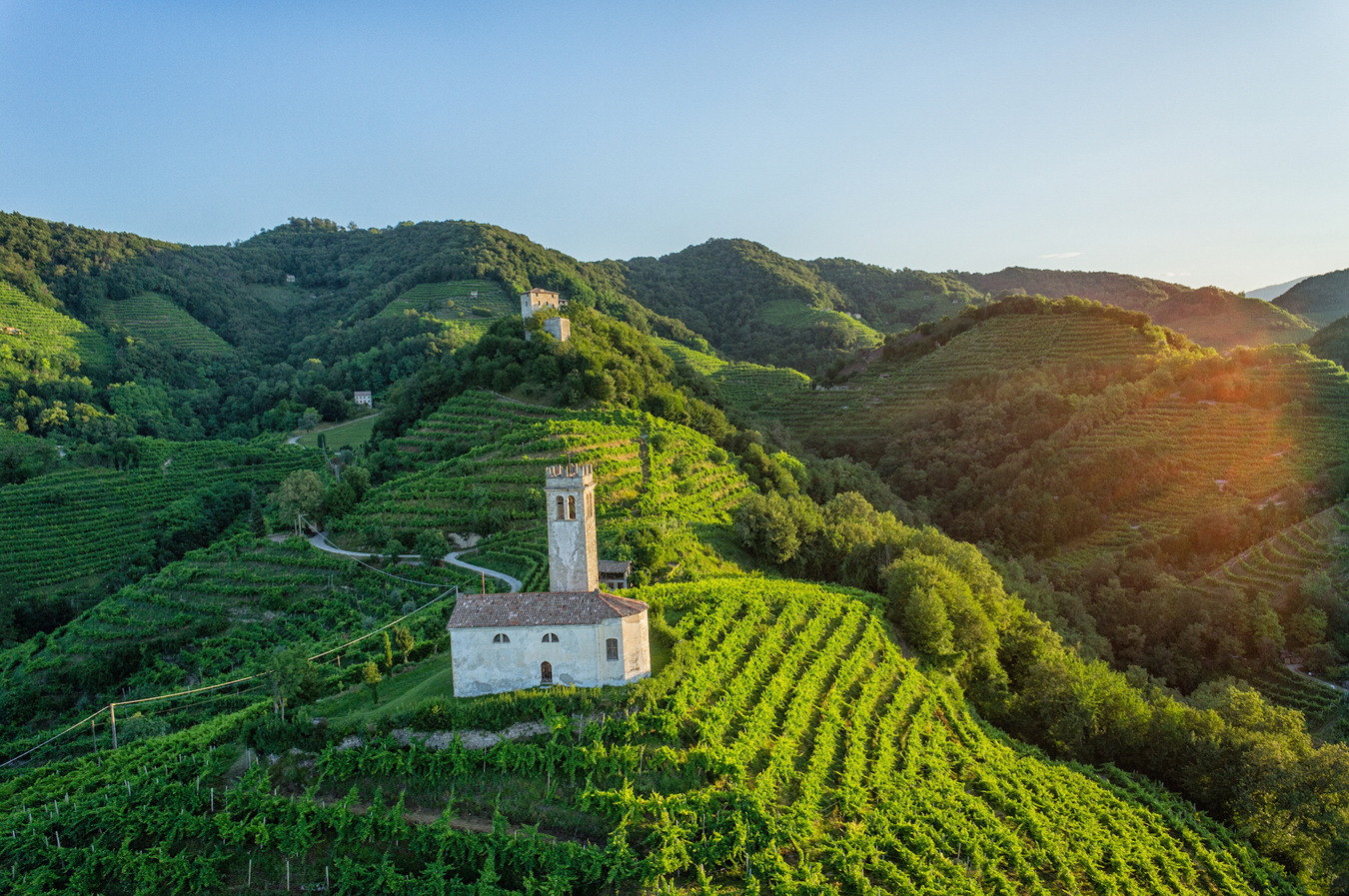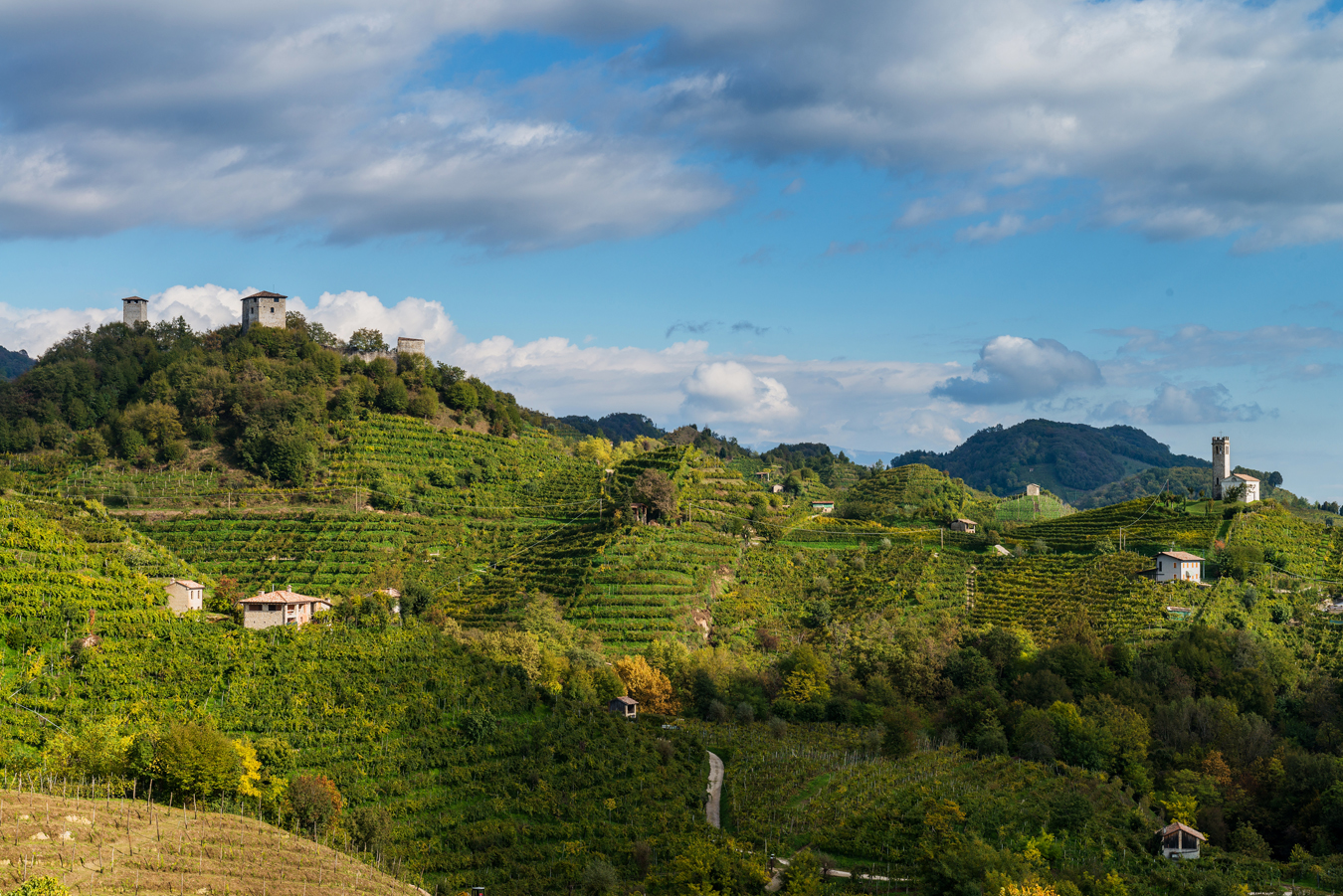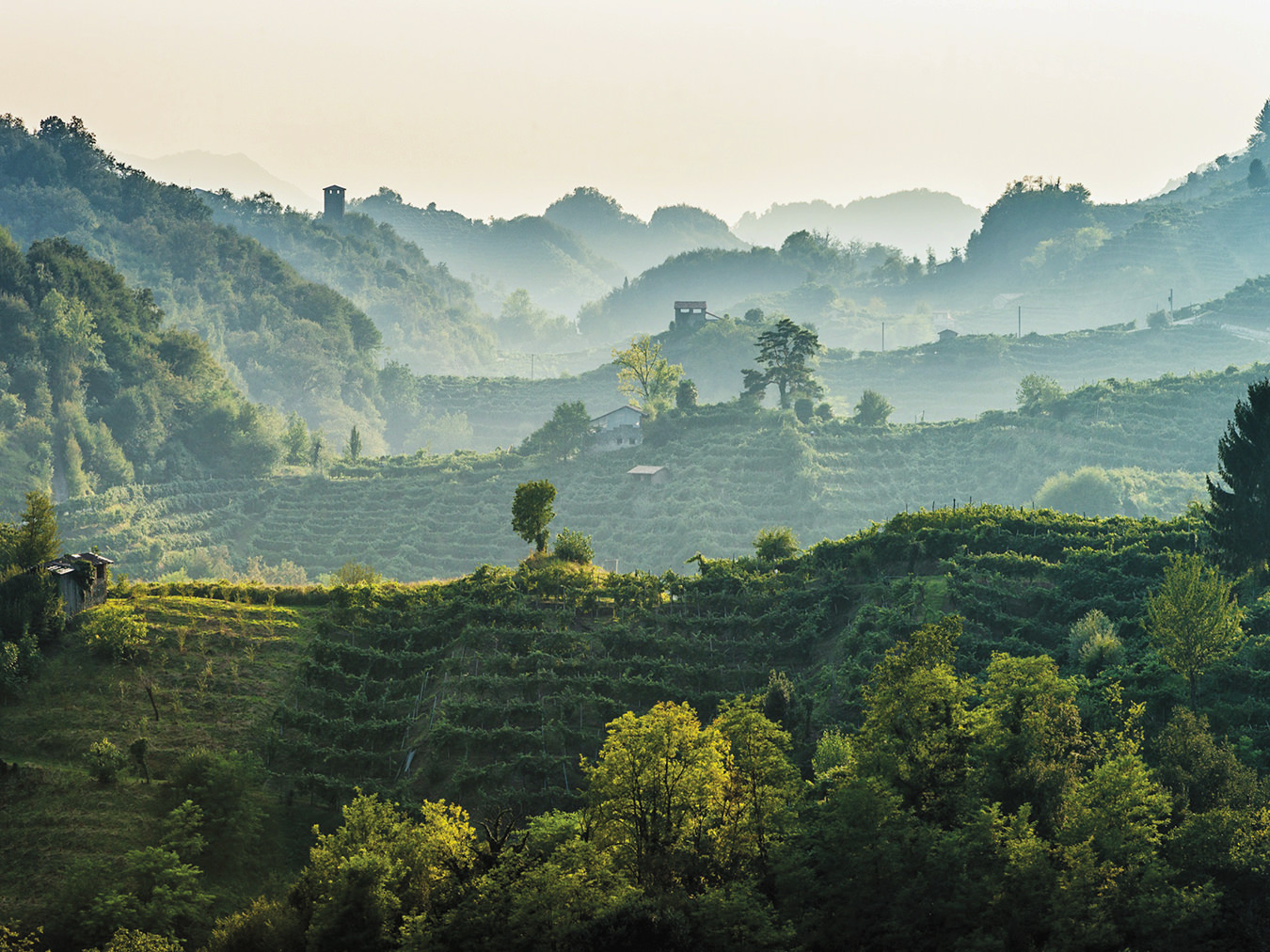There is a winding, hilly highway called Strada del Prosecco e Vini dei Colli Conegliano Valdobbiadene, which begins and ends in the major towns of Conegliano and Valdobbiadene, and which defies drivers to not pull over and gaze at the over-abundant scenic vistas, dotted with farmhouses and bedecked with pristine vineyards, all bearing fruit which will become, in bottle, a type of the Italian sparkling wine known widely as, simply, prosecco.
Wine is a highly competitive world, but prosecco has been on a steady rise for several years. There is Champagne, of course, and delectable Spanish cava wines. But prosecco is unique. This is partly due to an attractive price to quality ratio, in which a bottle of prosecco with plenty of acidity and character can be had for less than $20. Add the bubbles, and you have product that is easy to understand, easy to enjoy. Prosecco is today used mainly to describe the overall wine in bottle, made almost entirely from glera grapes. In olden times, glera was itself called prosecco, but that practise has subsided. The wines can run from fairly sweet through to almost bone dry, with a range of residual sugar levels, which mean almost any palate can find a prosecco that is right for them.
Italy has a fairly rigid classification system for its wines, demarking both geography and, to some extent, quality. For prosecco this means three broad zones that make up the Prosecco System. Consorzio Prosecco DOC (Denominazione di Origine Controllata) covers a wide swath of five provinces in the Veneto region, plus the Friuli Venezia Giulia area. These wines, most often derived from low-lying, fairly flat vineyards, constitute the entry-level and most affordable prosecco. Then there is Consorzio Conegliano Valdobbiadene Prosecco Superiore DOCG (Denominazione di Origine Controllata e Garantita), which comes from predominantly hillside vineyards in the province of Treviso, roughly on an arc described by the path from Conegliano to Valdobbiadene; and the Consorzio Asolo Prosecco Superiore DOCG, a small area of production where in 2015 just five million bottles of Prosecco Superiore were produced.
It has been a sometimes arduous process to identify and classify the smaller, potentially more high-quality areas as well. Thus it is that a designation of Rive (hillside) has come into being, in which select, steep vineyards are elected. The steepness of the vineyards dictates that the agriculture and the harvest must be done by hand, which, along with great drainage and hillside soil types, all make for a better wine. The Cartizze vineyard area, owned in small parcels by over 100 individual producers, measures only 107 hectares, and produces wines of great structure, some minerality, and balance.
There is a School of Oenology in Conegliano, where extensive research, all kinds of classes, and information seminars take place (founded in 1876, it is the oldest in Italy). Technological and scientific knowledge have aided prosecco production immensely, and some overall consistency in quality has been achieved, which has in turn been a great boon in the marketplace for the entire region.
Sandro Bottega, owner of Bottega S.P.A., has been relentless in his efforts to market not just his own wines, but the entire region, for many years. “I am gratified that we can reliably make a high-quality wine, vintage after vintage,” he says. “In my father’s time, it was more difficult. But the region has come a long way, especially in vineyard practices.” Mirco Pozzobon, who makes the wines at Tenuta 2Castelli along with the wines for Giusti Wine (owned by Canadian Joe Giusti), agrees. “Today, we have so much more knowledge of soils, climate, where exactly to plant,” he says. “The quality is really improving.” Vino in Villa is the region’s annual celebration of Conegliano Valdobbiadene Prosecco Superiore DOCG. It is held in the historic Castello San Salvatore in Susegana, which was built in the 12th century. All kinds of local foods are prepared, and there are free tastings, Prosecco Superiore seminars, plus a special tasting, in which over 200 wines are presented by producers and tasted by journalists from over 10 countries.
These wines are best enjoyed as an aperitif, or with the early courses in a lengthy dinner. Try a bottle, well chilled, and you will discover why it is on the rise, a mainstay in almost any celebratory moment, great with food, just fine on its own.
__________
Read more about wine.












